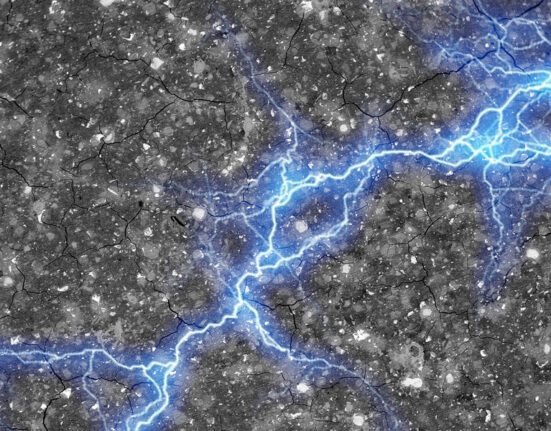HQ Team
November 6, 2023: Human activities are making the earth’s air, freshwater and soil saltier, posing an “existential threat” if the trend continues, researchers said.
Professor Sujay Kaushal, a geologist at the University of Maryland’s Earth System Science Interdisciplinary Center, said the society’s demand for salt came at a cost to both the environment and human health.
Geologic and hydrologic processes bring salts to the earth’s surface over time, but human activities such as mining and land development were rapidly accelerating this natural salt cycle.
Agriculture, construction, water and road treatment, and other industrial activities could intensify salinization, which harms biodiversity and makes drinking water unsafe in extreme cases.
The study showed how human-caused salinization affected about 2.5 billion acres of soil around the world—an area about the size of the US. Salt ions also increased in streams and rivers over the last 50 years, coinciding with an increase in the global use and production of salts.
Interconnected
“If you think of the planet as a living organism, when you accumulate so much salt it could affect the functioning of vital organs or ecosystems,” Prof Kaushal said.
“Removing salt from water is energy-intensive and expensive, and the brine byproduct you end up with is saltier than ocean water and can’t be easily disposed of.”
Kaushal and his co-authors described these disturbances as an anthropogenic salt cycle, establishing for the first time that humans affect the concentration and cycling of salt on a global, interconnected scale.
“Twenty years ago, all we had were case studies. We could say surface waters were salty here in New York or Baltimore’s drinking water supply,” said study co-author Gene Likens, an ecologist at the University of Connecticut and the Cary Institute of Ecosystem Studies. “We now show that it’s a cycle—from the deep Earth to the atmosphere—that’s been significantly perturbed by human activities.”
Adverse effect of road salts
The research considered a variety of salt ions that are found underground and in surface water. “Salts” refer to compounds far beyond just common table salt, Prof Kaushal said.
“When people think of salt, they tend to think of sodium chloride, but our work over the years has shown that we’ve disturbed other types of salts, including ones related to limestone, gypsum and calcium sulfate,” he said.
Salt has infiltrated the air.
In some regions, lakes are drying up and sending plumes of saline dust into the atmosphere. In areas that experience snow, road salts can become aerosolized, creating sodium and chloride particulate matter.
Road salts churn out 44 billion pounds of deicing agent each year and represent 44% of US salt consumption from 2013 to 2017.
They account for 13.9% of the total dissolved solids that enter streams. This can cause a “substantial” concentration of salt in watersheds, the researchers wrote in the journal Nature Reviews Earth and Environment.
Saline dust can accelerate the melting of snow and harm communities—particularly in the western US —that rely on snow for their water supply.
‘Chemical cocktails’
Because of their structure, salt ions can bind to contaminants in soils and sediments, forming “chemical cocktails” that circulate in the environment and have detrimental effects.
“Salt has a small ionic radius and can wedge itself between soil particles very easily,” Prof Kaushal said. “That’s how road salts prevent ice crystals from forming.”
“There’s the short-term risk of injury, which is serious and something we certainly need to think about, but there’s also the long-term risk of health issues associated with too much salt in our water,” he said. “It’s about finding the right balance.”
The study’s authors called for a “planetary boundary for safe and sustainable salt use” in the same way that carbon dioxide levels are associated with a planetary boundary to limit climate change.
“This is a very complex issue because salt is not considered a primary drinking water contaminant in the US, so to regulate it would be a big undertaking,” Kaushal said. “But do I think it’s a substance that is increasing in the environment to harmful levels? Yes.”








